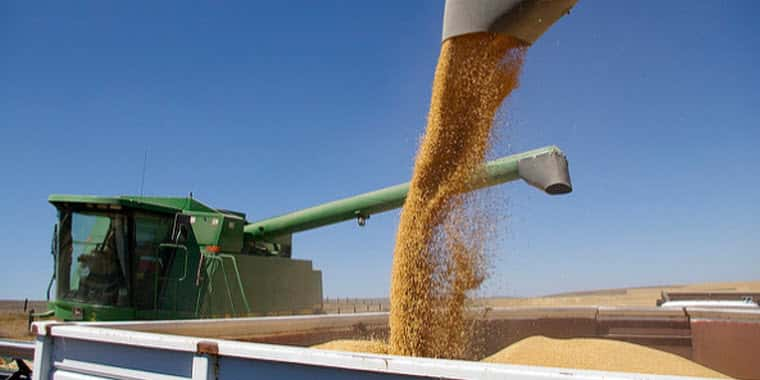After waiting months on end, some farmers will receive the needed relief they have been waiting for, following devastating crop quality losses in 2018 and 2019. Last week, the USDA made the announcement, which detailed the newly formed Quality Loss Adjustment (QLA) Program.
“We have worked diligently over the past couple of years to roll out meaningful disaster assistance programs to help alleviate the substantial financial loss experienced by so many agricultural producers and are pleased to offer quality loss assistance as added relief,” said USDA Under Secretary for Farm Production and Conservation Bill Northey.
Assistance is available for eligible producers in counties that received a qualifying designation from a Presidential or Secretarial declaration that was a result of a qualifying disaster event.
Included amongst those counties is McCone County, Montana. There you will find a family operation that spreads over 10,000 acres and is ran by Leonard and Trevor Schock. Their operation is located just outside of Vida, MT and produces several commodities through dry land farming techniques, including winter wheat, peas, mustard, the occasional chick peas and primarily spring wheat.
Unfortunately for the Schock family, their spring wheat was the hardest hit commodity on their place in 2019.
In an interview with Northern Ag Network, Trevor Schock said the entire season seemed to run about three weeks behind schedule. Finally, by the tail end of August, they were able to complete their winter wheat, peas and mustard harvest. However, as the Schock family found themselves three days deep into the spring wheat harvest, the Big Sky opened up and the rains came down.
“Once it started, it seemed like it never quit,” said Schock adding “it wasn’t a heavy downpour but more so a slow, soaking rain.” That took roughly ten days away from the harvest for the Schock family while the spring wheat soaked up all moisture. “The way the wheat acts in that, it just soaks up all the moisture and stays wet, and then it starts to sprout in the head and basically just destroyed any quality that it had so anything we harvested after that was considered feed wheat,” said Schock.
Typically, the high-quality wheat raised in eastern Montana will bring a price premium at the elevator. Once the commodity is damaged to the point of sprouting in the head, producers are usually forced to sell their commodity at a feed quality rate. In 2019, that meant a two dollar per bushel hit for some producers.
When asked about the federal assistance, Schock said while the QLA program will not make up for those losses completely, he feels the program is quite adequate.
Trevor Schock is also on the board of directors for the Montana Grain Growers Association (MGGA). In a statement, they too announced their excitement for the program saying, the relief was truly needed.
MGGA President Mitch Konen said, “It is a good feeling to finally get this expansion of the WHIP+ program to the end zone! National Association of Wheat Growers, MGGA and past EVP Lola Raska put a lot of effort into getting this Quality Loss Assistance included into the WHIP+ program.” Konen added, “We continuously struggle to produce low cost and high-quality crops to feed the world and this program is just another tool in our toolbox to help maintain that struggle.”
Producers are encouraged to visit with their county Farm Service Agency office to signup for the program. The deadline to apply for QLA is Friday, March 5, 2021.
#####
Northern Ag Network – 2021


